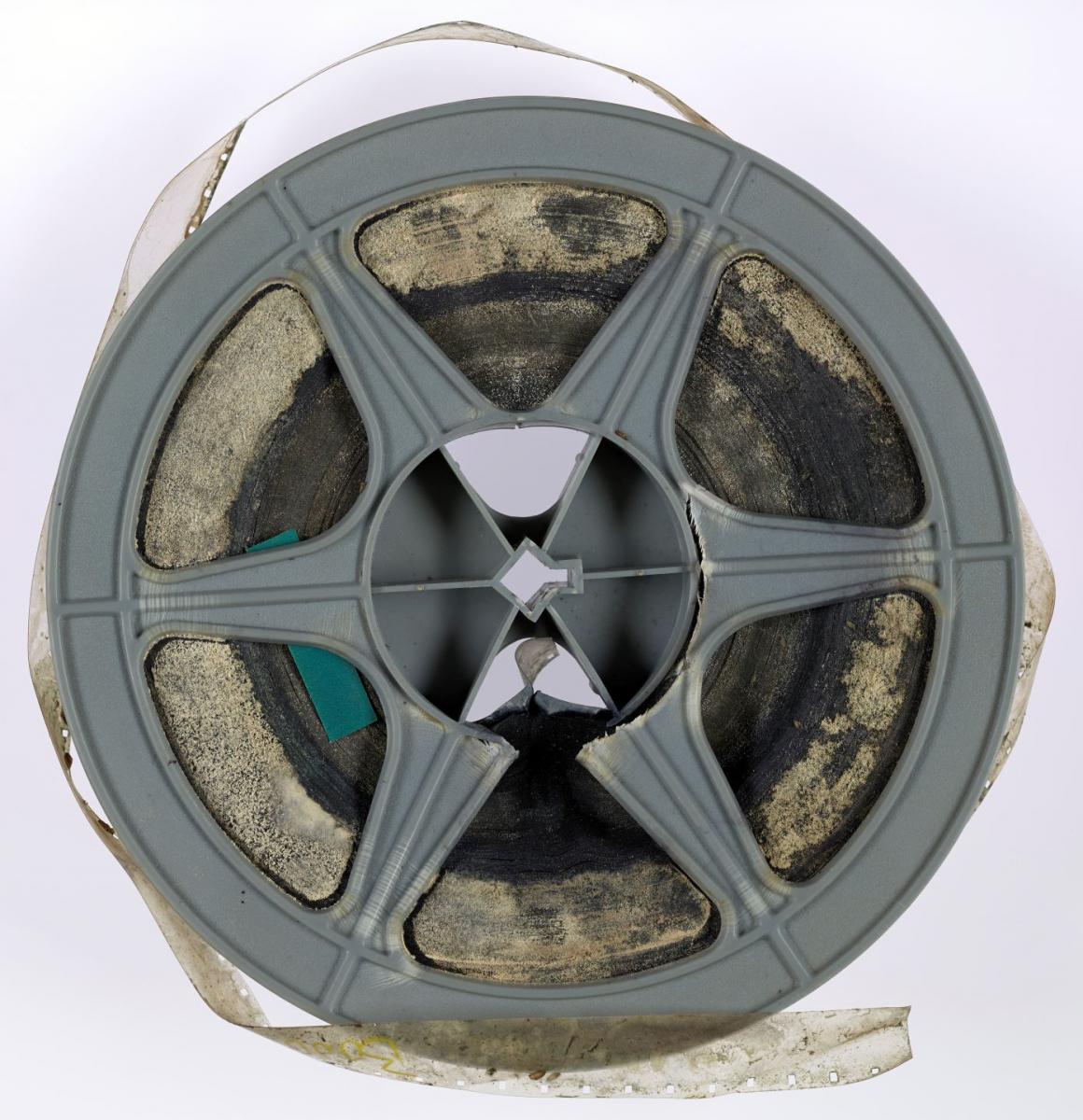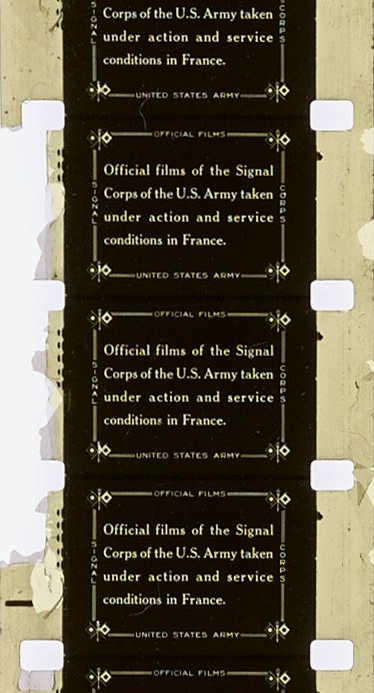
Motion Picture Film Guidance: Determining Condition of Materials
Once you have determined the gauge and type of motion picture film you hope to preserve using our Film Identification page and other resources, perform an evaluation of the condition of your film. While you may not have equipment to perform a detailed inspection of your film, even a quick evaluation of the smell and look of the reel will allow you to gather information that will help your service provider plan for how to best approach preservation and digitization of your film.
How Do I Know If My Materials Are In Good Condition?
What are common problems with film formats, and remedies?
Over time, motion picture film ages. The condition of a film is affected by how the stock was manufactured, how the film was developed, and whether it has been stored properly.
Film in good condition will be flexible, have little to no odor, and will not have faded or exhibit other optical defects. Film in poor condition may be brittle, shrunken, give off an unpleasant odor, or exhibit muted or faded color.
Note the odor of the film:
The first way to assess a film is by smell. The odor of a film can help identify the base type and suggest issues of chemical deterioration. Hold the film away from your face and use your hand to gently waft air toward your nose. Some odors can be harsh and you do not want to inhale too much.
- Does the film smell like old sweaty socks? You may have nitrate film
- Moth balls? The film is diacetate, an early type of safety film. It likely has issues with shrinkage and brittleness
- Vinegar? All acetate film stocks are susceptible to vinegar syndrome, which means that the film base is breaking down. If you smell vinegar, the film is in trouble and should be assessed by a professional.
Look at the film:
A visual assessment of the film in its container will alert you to physical problems.
If the film does not exhibit these characteristics and you have the proper equipment, you may gently wind through the film to see how it holds up. Do not project the film or run it through any equipment until you know whether or not your film is stable enough to withstand playback on mechanical equipment. As you wind through the film take note of optical defects that will alert you to other types of deterioration. Some examples of common issues are included below, although this chart is not comprehensive.
Collections Assessment and Preservation Prioritization
For institutions or individuals with more than a handful of films, prioritization is necessary. Preservation decisions might be made based on the content of the film; a comprehensive assessment of the collection is also helpful in assigning priority for preservation funds. Conducting a more detailed condition assessment of film collections will require A-D strips to test for vinegar syndrome, a shrinkage gauge, and equipment to wind through each film.
The National Archives and Records Administration's Motion Picture Preservation Lab uses the Motion Picture Condition At Risk Assessment Guide in risk assessment.
How long will film materials last?
If stored properly, a new film can last hundreds of years. A film with vinegar syndrome or other deterioration should be copied as soon as possible to prevent loss.
See the Image Permanence Institute’s Storage Guides and Calculators to find out how long a film will survive under varying conditions.
Where can I find more information?
Chapter 3 of the National Film Preservation Foundation Film Preservation Guide contains detailed information about how to perform a full film inspection, including necessary tools and supplies.
The Visual Decay Guide on FilmCare.org has detailed information about how and why film materials deteriorate.





